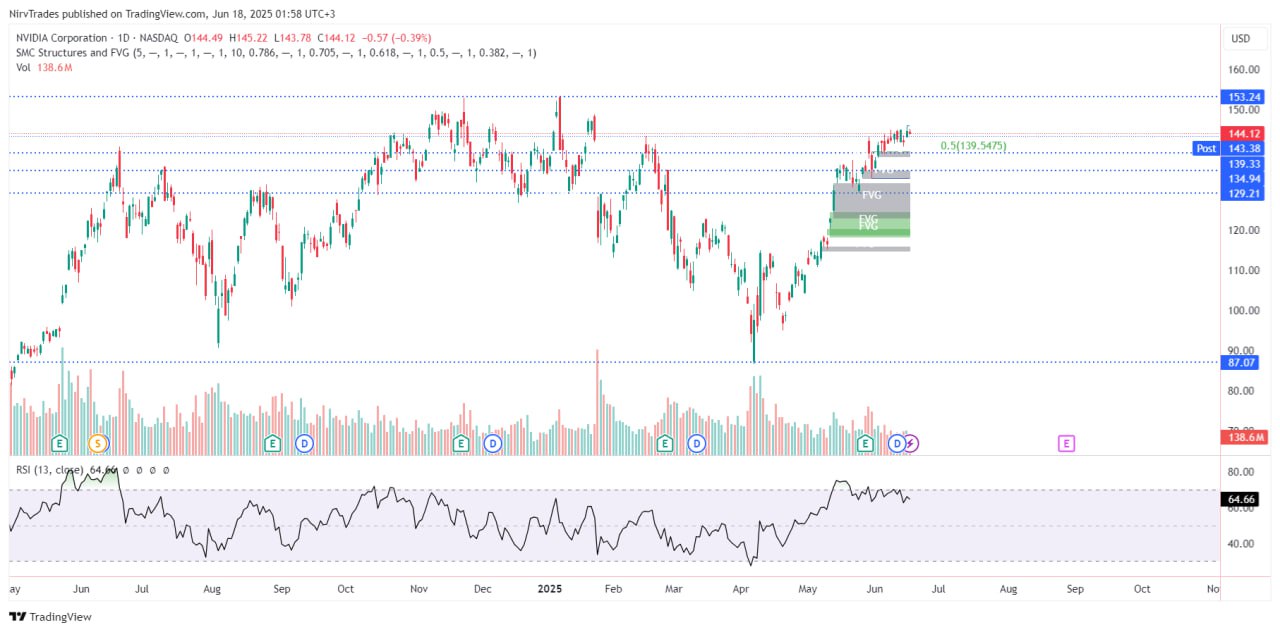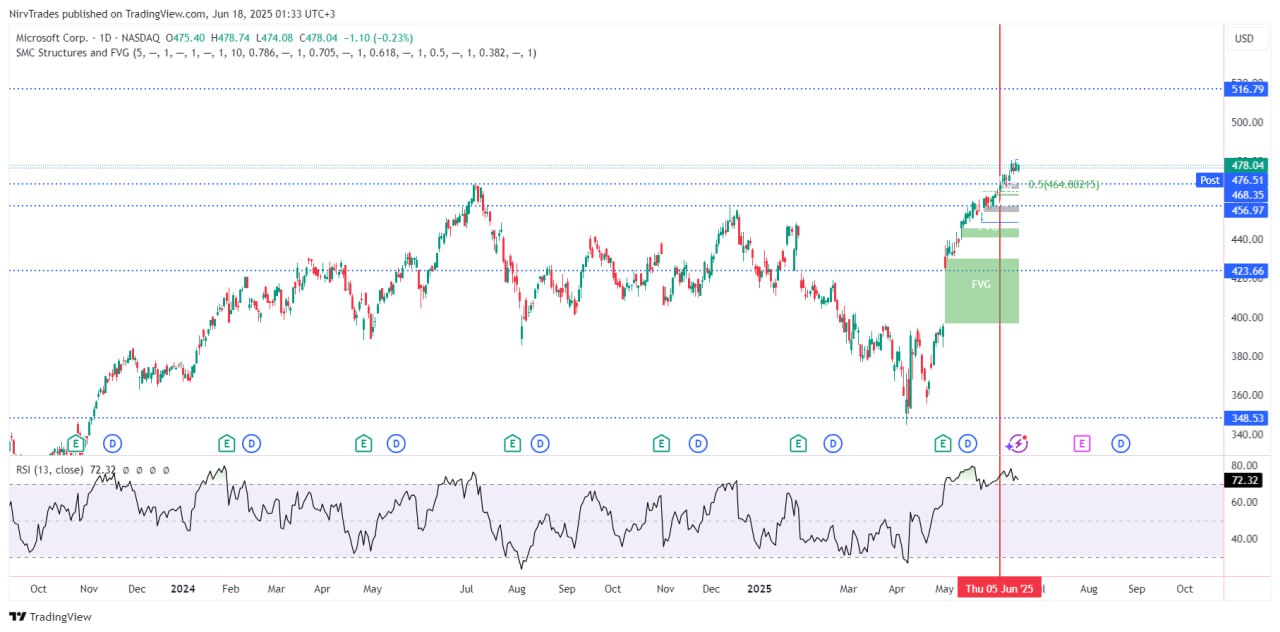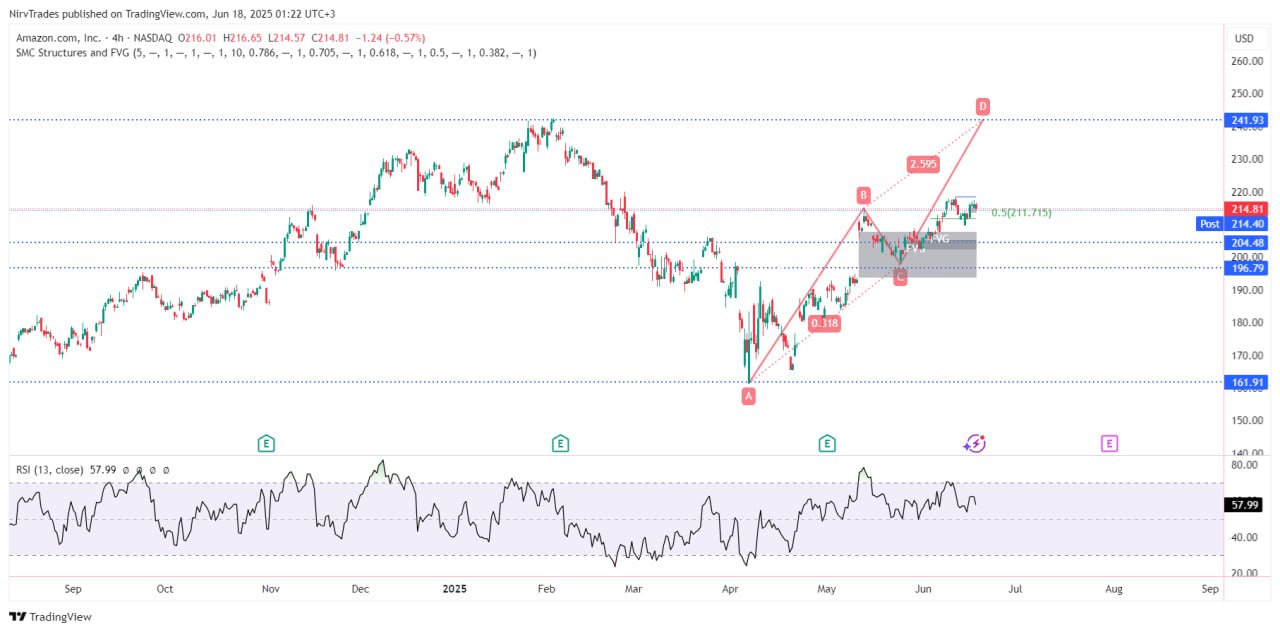3 Best AI Stocks to Invest in 2025
AI Summary
- NVIDIA, Microsoft, and Amazon are the top three AI stocks to invest in for 2025
- NVIDIA controls around 87% of the GPU market used in AI, despite growing competition
- Microsoft has integrated AI into services like Azure, Office 365, and Teams, with a market cap of $3.547 trillion
Top AI Stocks for 2025
Artificial Intelligence (AI) has become the driving force behind modern changes in the financial markets. In 2025, it's one of the most attractive sectors for investors. In this article, we highlight the top three AI stocks: NVIDIA, Microsoft, and Amazon, and explore why investors are focusing on them.
1. NVIDIA
History
NVIDIA was founded in 1993 by Jensen Huang and partners, initially focusing on graphics processing units (GPUs) for gaming. In 2006, it launched the CUDA platform, revolutionizing parallel computing—including training AI models. By 2025, NVIDIA controls around 87% of the GPU market used in AI, thanks to products like the H100 and Blackwell chips, the top choice for companies like OpenAI and Google.
Despite growing competition from Chinese AI models such as DeepSeek R1, NVIDIA remains the industry leader.
Fundamental Analysis
- Market Cap: $3.517 trillion (June 2025)
- P/E Ratio: Historical 46.59, Forward 33.63
- 5-Year PEG: 1.36
- Price-to-Sales: 23.93
- Price-to-Book: 42.18
Technical Analysis
The stock trades in a sideways range on the weekly timeframe between $153 and $87.9. It bounced strongly from the $87 weekly support, but with RSI overbought, a correction is expected.
Best Buy Zones: $140 - $134 - $129ش

2. Microsoft
History
Microsoft was founded in 1975 by Bill Gates and Paul Allen. It entered AI in the 1990s through Microsoft Research. The company launched Cortana in 2014, then integrated AI into services like Azure, Office 365, and Teams. Its partnership with OpenAI has solidified its leadership in cloud-based AI.
Fundamental Analysis
- Market Cap: $3.547 trillion (June 2025)
- P/E Ratio: Historical 37.03, Forward 31.95
- PEG: 2.25
- Profit Margin: 36.86%
- Annual Revenue: $280.26 billion
- Free Cash Flow: $54.82 billion
Technical Analysis
The stock recently broke out of a sideways range on the daily timeframe between $468 resistance and $348.5 support. With strong RSI momentum, it is expected to continue rising toward $516.
Best Buy Zones: $486 and $456

3. Amazon
History
Amazon was founded in 1994 by Jeff Bezos as an online bookstore, quickly evolving into "the everything store." It began using AI in 1998 in its recommendation engine, which generates around 35% of its revenue. Through AWS, Amazon offers AI services like SageMaker and uses AI in logistics and its voice assistant Alexa.
By 2025, Amazon has integrated AI across all operations, cementing its role as a leading tech powerhouse.
Fundamental Analysis
- Market Cap: $2.29 trillion
- P/E Ratio: Historical 35.20, Forward 33.44
- PEG: 2.39
- Annual Revenue: $650.31 billion
- Profit Margin: 10.14%
- Free Cash Flow: $39.27 billion
Technical Analysis
On the 4-hour chart, the stock is trading in a sideways range between $241.93 resistance and $161.91 support. A harmonic AB=CD pattern may complete near the PRZ area close to resistance, followed by a potential RSI correction toward 50 before resuming the uptrend.
Best Buy Zones: $204.5 and $196.8

Your Guide to Getting Started in Stock Market Trading
Introduction to Stock Trading
Stock trading is one of the most exciting financial activities in the world of investing, whether you're a beginner or a professional. Whether you're looking to understand the basics or explore advanced strategies, understanding stock market dynamics and developing your skills is the first step toward success. This article will serve as your comprehensive guide to the stock market.
What is Stock Trading?
Stock trading is the process of buying and selling shares of publicly listed companies with the aim of profiting from price fluctuations. You can track stock prices and market news on our website.
Types of Stock Trading
- Day Trading: Buying and selling stocks on the same day to take advantage of small price movements. This requires fast decision-making.
- Swing Trading: Aims to benefit from price movements over days or weeks.
- Long-Term Investing: Buying strong company stocks and holding them for years for capital growth and dividends.
- News-Based Trading: Reacting to economic events or company and market news.
Why is Stock Trading Attractive?
- Flexibility: You can trade with small or large amounts based on your budget.
- Diversification: Exchanges offer a wide variety of companies across sectors.
- Liquidity: Stocks are easy to buy and sell in active markets.
- High Return Potential: Despite risks, trading can generate high profits when done correctly.
Stock Trading Basics
- Open a trading account with a trusted broker.
- Learn market analysis: Understand technical analysis and fundamental analysis.
- Set a clear trading plan with short- and long-term goals.
- Manage risk wisely using stop-loss orders and never risk more than 2% of your capital on a single trade.
Stock Trading Strategies
1. Technical Analysis
Visit our technical analysis section to understand trends using:
- Moving Averages
- Relative Strength Index (RSI)
- Support and Resistance Levels
2. Fundamental Analysis
- Price-to-Earnings Ratio (P/E)
- Company revenue and profits
- Dividend payouts
3. Harmonic Trading
A method that uses patterns like "Gartley" and "Crab" with Fibonacci ratios to identify reversal points.
4. Smart Money Concepts (SMC)
- Supply and Demand Zones
- Break of Structure (BOS)
- Liquidity Analysis
Risk Management in Stock Trading
- Never risk more than 1–2% of your capital per trade.
- Use stop-loss orders to protect your account.
- Diversify your portfolio—don’t put all funds in one stock.
- Avoid emotional decisions under pressure.
Tips for Beginner Stock Traders
- Start with a demo account to experience the market without risk.
- Invest in education: Courses, books, and follow experts.
- Stay updated with economic news that impacts the market.
- Be patient—don’t expect quick profits.
Challenges in Stock Trading
- High market volatility.
- Sudden losses due to poor decisions.
- Constant psychological pressure from daily price movements.
What is Trading? Your Comprehensive Guide to the World of Financial Markets
Introduction to Trading
Trading is the process of buying and selling financial assets such as stocks, commodities, currencies, or derivatives in financial markets with the aim of making a certain profit. It is considered one of the most important activities in the economy, as it helps determine the prices of financial instruments and provides liquidity in the markets.
Therefore, whether you are a beginner or even a professional, understanding the basics of trading and terminology is one of the most important steps to begin succeeding in financial markets.
Financial Markets
Usually, when you hear the phrase "financial markets," you immediately think of the stock market. But did you know there are several types of financial markets?
- Forex Market: Currency trading.
- Stock Market: Includes stocks and bonds.
- Derivatives Market: Contracts for difference (CFDs).
- Commodities Market: Such as gold, silver, oil, and agricultural products.
- Cryptocurrencies: Such as Bitcoin, Ethereum, and others.
Types of Trading
There are several types of trading depending on the time horizon and trader strategy:
- Day Trading: Positions are opened and closed within the same day. A day trader must be quick in decision-making and remain calm during volatility.
- Swing Trading: Trades last from a few days to several weeks. Swing traders are typically patient and rely on technical analysis.
- Long-Term Trading: Holding assets for months or years. Long-term traders follow major trends and require strong endurance.
Each type requires different strategies and tools, so it’s important to choose the style that matches your goals and experience level.
Trading Tools
The best way to begin trading properly is by using the following tools:
- Choose a Trading Platform: Such as MetaTrader 4/5 or TradingView, which provide analysis tools and order execution.
- Learn Technical Analysis: Based on studying charts and price patterns to predict future movements. Learn technical analysis here.
- Fundamental Analysis: Focuses on economic factors. In stocks, it includes analyzing earnings and revenues; in forex, it involves reviewing economic data like interest rates and sales. Follow economic news.
- Risk Management: Determine position size and set stop-loss orders. It’s recommended that the risk per trade be between 1% to 2%.
How to Start Trading
- Continuous Learning: Read books, attend seminars, and follow educational content. Start learning here.
- Choose a Reliable Broker: Must be licensed and offer a secure platform with low fees.
- Open a Demo Account: Practice trading without risk using a demo account.
- Create a Trading Plan: Define your weekly and monthly goals, your technical strategy, and your risk management rules.
- Start Small: Don’t start with more than 10% of your savings to minimize risk.
Trading Challenges
Trading is not an easy or quick path to wealth. Traders face many challenges, including:
- High market volatility.
- Psychological pressure from fluctuating losses or gains.
- Potential losses due to weak risk management or lack of a clear strategy.
Discipline, patience, and learning from mistakes are key to success in trading.
Tips for Beginner Traders
- Don’t rely on luck—trading depends on knowledge and analysis.
- Avoid emotional trading and stick to your plan no matter what.
- Follow economic news to understand its effect on market movements. See the latest updates.
- Keep improving your skills through experience and continuous analysis.



